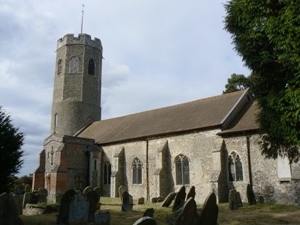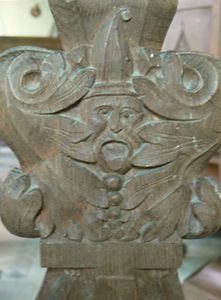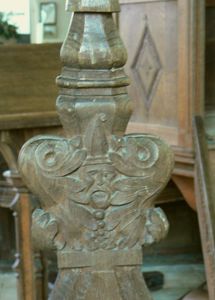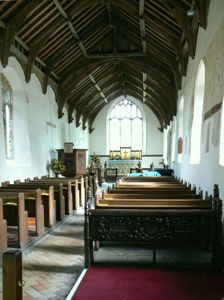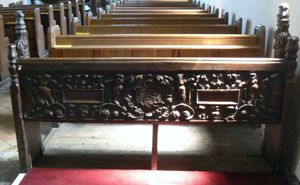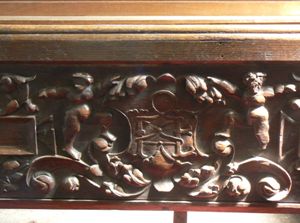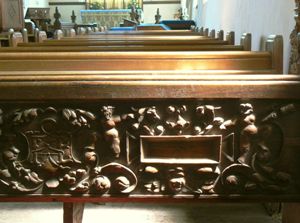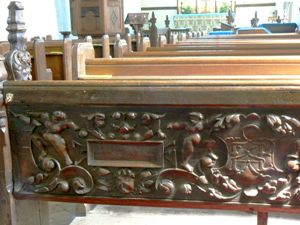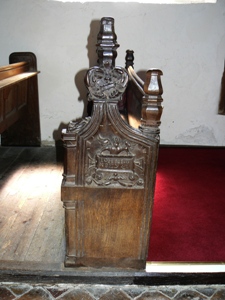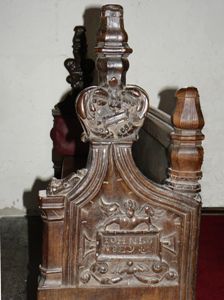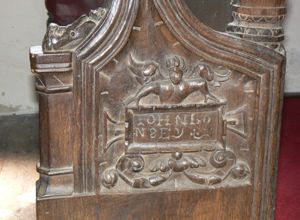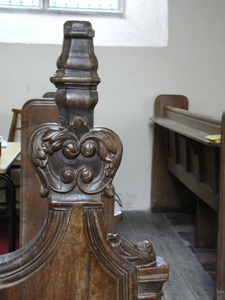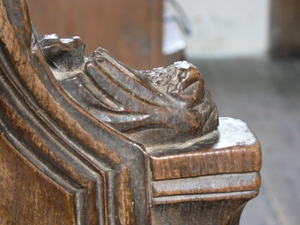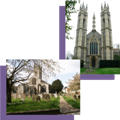
BENCH ENDS
Beautiful carvings of the bench ends in East Anglian churches
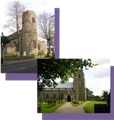
|
BENCH ENDS AND GREEN MEN IN SUFFOLK AND NORFOLK CHURCHES
I LOCATIONS. More will be added as they are discovered.
ILKETSHALL ST. ANDREW, NEAR BUNGAY, SUFFOLK
There are two groups of villages just south of Bungay, the South Elmhams and the Ilketshalls, each one being named after a different saint. Peering at the map I make it seven South Elmhams and three Ilketshalls with two of the latter being east of the Bungay-Harleston road which follows the line of the old Roman Stone Street, while the rest are on the western side. Needless to say, the whole area is generally known as The Saints. Believe me, it is all too easy to get lost up there amongst the narrow winding roads, they are not on the way to anywhere very much except each other and the language of a driver in a hurry may not be that reverent. However, having once found the way to this particular small church to see the recently discovered wall paintings I returned and found it again, with a bit of head scratching at a staggered criss-crossing of five lanes, my visit this time being to photograph the bench carvings. But a great surprise was the wonderful Green Man below, carved on the end of one of the choir stalls.
Found in a small church like this and in such a prominent position makes me wonder what exactly its interpretation can be. There are various suggestions as to the origin of the Green Man and I am drawn to try and find out more about its significance to the Christian Church. That the Church took over and injected its own meaning into many old pagan festivals and symbols is well known, so what did the Green Man represent other than perhaps the natural world created by God? But why "bring it over", why not just ignore it?
Going back to the west end of the church, below is a general view and then a close-up of a wonderful piece of carving on the back of the rear bench.
This carving was only recently re-discovered as apparently the bench was placed with its back against the wall for many years.
Enlargement of the centre of the panel with a very roly-poly cherub each side of a central carving of initials, arms outstretched and with feet firmly planted on part of the leafy scrolling. You can almost hear them shouting "Behold".
Left and right sections of the panel, again with a stalwart cherub at the ends. The narrow rectangular boxes are empty.
At the left is the end of the bench the back of which is shown above, with an enlargement at the right.
A closer look at the bench end panel "John of Bungay". Who this was has yet to be discovered. If anyone has any information I would be delighted to hear from you via my Contact page.
On the opposite side of the aisle is the bench end at the left, with its arm-rest carving above as yet unidentified, (like John of Bungay).
This small church is a gem, and although they are not described here, the mediaeval wall paintings accidently discovered only a few years ago have been partially revealed during many weeks of painstaking work by experts. It is well worth getting lost in the Saints to eventually find them.
~~~~~~~~~~~~~~~
Click letter for locations with that initial: D F G W
Copyright Ivy Collins 2009
|

